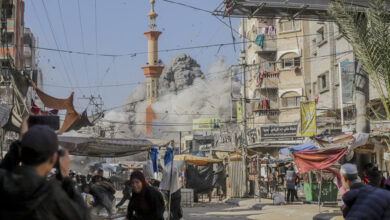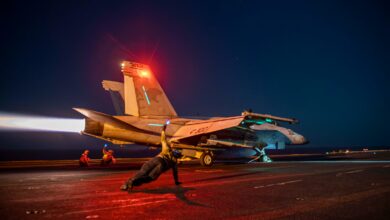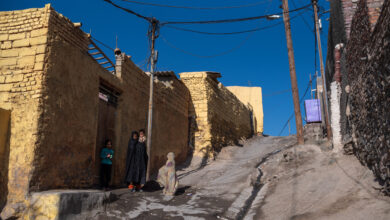Afghanistan school children increasingly vulnerable in surging conflict
Experts believe Afghanistan’s fledgling media is unable to challenge and expose the brutalities of the warring sides
KABUL, Afghanistan – In the span of a few short days in early July, scores of Afghan school children have been brazenly injured and traumatized in the Taliban’s mounting offensives in the war-ravaged country.
As heartbreaking visuals of innocent children in school uniforms spattered with blood were still making rounds on social media yet another of the Taliban’s massive suicide car bombings in Ghazni province caused more anguish and put more children in pain.
More than 50 children were wounded in a suicide car bombing in a residential area of the capital on July 1 that killed at least 10 people. Scores more were injured and two killed in a similar attack on July 7 in the central Ghazni province.
The devastating marks of terror were evident on the premises of Khana-e-Noor (Light House) High School along the Kabul River that was jolted by a suicide car bomb. Speaking to The Defense Post, faculty members, teachers and parents said they felt like the roof of the building would collapse on them in the early hours of studies.
“The whole school was jolted as if a massive earthquake has hit us, sharp broken glass was shattered all over and children started crying and running for their lives,” said faculty member Mohammad Waqas.
Kabul is often considered to be among the most secure parts of the country, but the vulnerability of its residents, particularly school children, has exposed a grim reality.
Fazel Amin, a grade eight student who sells roadside snacks after school, is still haunted by the memories of the tragedy that happened within walking distance from his cart.
“My body still hurts, and I am having nightmares since the attack,” the visibly shaken Amin said at his French fry stall where he was working with a bandaged arm.
Following these attacks, security analysts have argued that the fragile Afghan government struggles to both protect the public from insurgents and develop a national narrative against terrorism.
Others argue that the government in Kabul and the international troops that support it are equally responsible for identical catastrophes resulting in civilian casualties.
This is in stark contrast to the 2014 Army Public School massacre in neighboring Pakistan when the Tehrik-i-Taliban killed more than 100 students in cold blood. That attack resulted in a constitutional amendment allowing civilians to be tried in military courts, and a robust military and media campaign with other significant impacts.
Media’s independent role challenged
Pakistan-based researcher, writer and security analyst Zia Rehman told The Defense Post that the Afghan media is too young, vulnerable and dependent on foreign donors and the government to take the lead in exposing the atrocities by the warring sides.
“In Pakistan the APS [Army Public School] case, media played a key role. Compared to Afghanistan’s media, Pakistan’s media is developed, huge and vibrant. Pakistan’s media now understand the influence it creates on their audience/readership through positive or negative coverage of the events, such as this school attack in 2014,” Rehman said.
“I believe that positive media treatment/handling of terrorist attack leads to public solidarity and peace, and decrease the level of fear in the public instead of generating. Afghanistan’s media is very small and still under development, mostly dependent of foreign funds/aid.”
A Taliban spokesperson, Suhail Shaheen, told Tolo News that attacks that caused harm to children would be investigated.
Private media is a relatively new phenomenon in Afghanistan dating back to early 2000 and largely thanks to generous international support. The country, however, remains one of the deadliest places for journalists worldwide.
Just last month, the Taliban warned Afghan media outlets of dire consequences if they did not cease broadcasting, publishing or telecasting alleged ‘propaganda’ against the ‘Islamic Emirate Mujahedeen’ within a week.
Undermining the credibility of the Afghan government, the Taliban continue to engage in peace talks with the United States in the Qatari capital Doha.
In the view of security analyst Hekmatullah Hekmat, the only way out of this deadly quagmire is for the warning sides to stop seeking the upper hand in peace talks through violence.
“All warring sides are equally complicit in harming the civilians, they should immediately stop playing with the innocent civilian lives for more power and perks, and instead peacefully end the war through talks,” the retired Afghan National Army general said.
The latest quarterly report by the United Nations Assistance Mission in Afghanistan documented a total of 1,773 civilian casualties (581 deaths and 1,192 injuries), including 582 child casualties (150 deaths and 432 injuries) between January 1 and March 31 this year.












